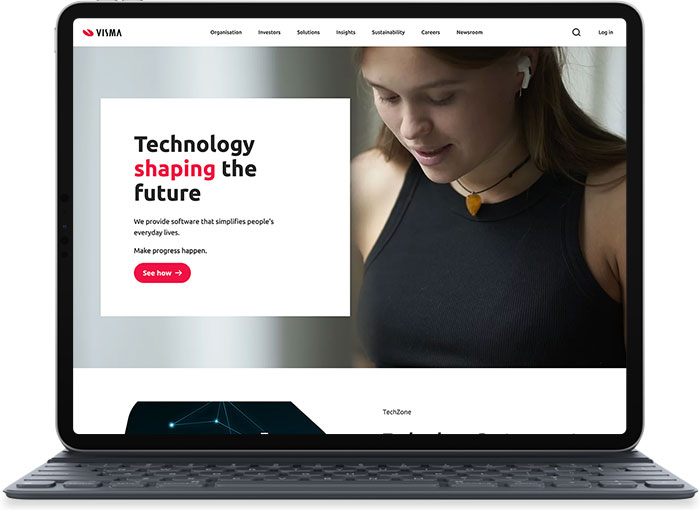
CONTEXT
Visma Software is part of the Visma Group of Companies, which has 900,000 customers spanning 12 countries and services in five distinct business areas.
The objectives of this project were on two different levels. First of all, we wanted to analyse and predict the probability of both churn and buying. Secondly, we wanted to get to know the factors, processes and variables that influence churn & buying probability the most so that we could influence event outcomes effectively, either by preventing churn or accelerating buying.

THE CHALLENGE
Visma marketing team wanted to identify customer behaviour before churn and enhance their own activities to prevent it.
The team wanted to be more precise about creating offers and identify the need for training, webinars or other services to keep customers loyal and even increase purchases.
Churn is one of the most demanding predictive analysis operations from a data requirement point of view when it comes to marketing.

THE SOLUTION
We used machine learning to predict customer churn and the likelihood of leads making a purchase. For the churn project we were trying to sort customers into two categories: whether they were likely to churn or not. For the lead scoring/sales prediction project we weren’t just trying to sort leads into two boxes. We were trying to rank them based on probability of making a purchase.
Our model combined sales and support data sets, enriched with marketing activity data such as email activity data and website and customer portal activity data, along with firmographics information. All in all, we gathered data from five systems, controlled 70 variables and analysed 168,000 data points across 2,722 customer businesses for churn and an additional 6,444 potential purchasers.
THE RESULTS
We achieved prediction model accuracy of 84.6% for churn and 84.1% for sales—very high when it comes to predictive marketing technology.
By using Oracle Eloqua, the team was able to harness multiple years of activity data, which helped achieve high prediction model accuracy. In the end, more accurate prediction allowed the marketing team to identify 602 new leads and 722 customer businesses at risk of churn.
The team is now going to implement the right tactics at the right time to increase purchases and reduce customer loss, both of which will have an effect on the bottom line for years to come. The results also provided new insights into the processes and mechanisms that affect churn and buying.



